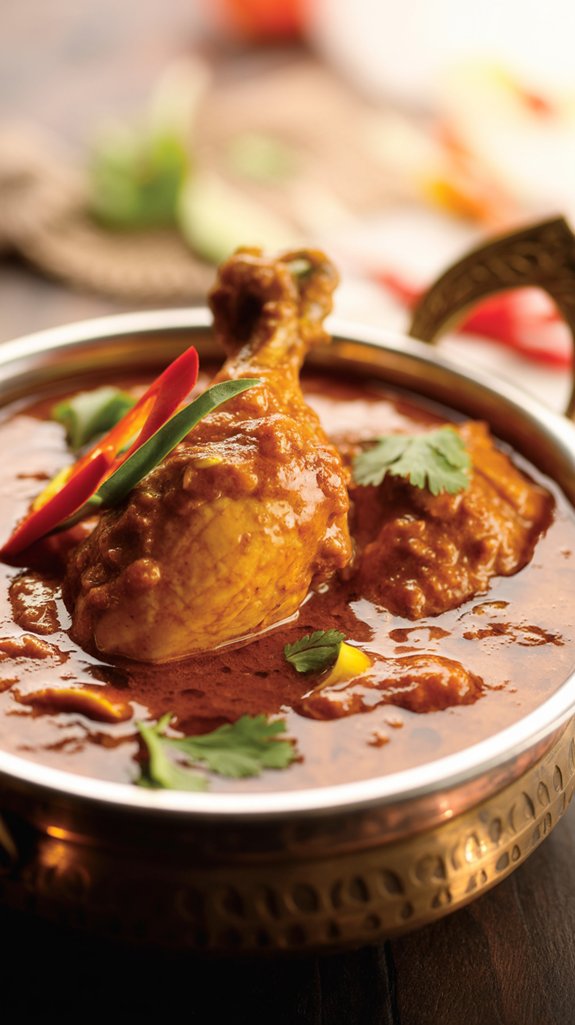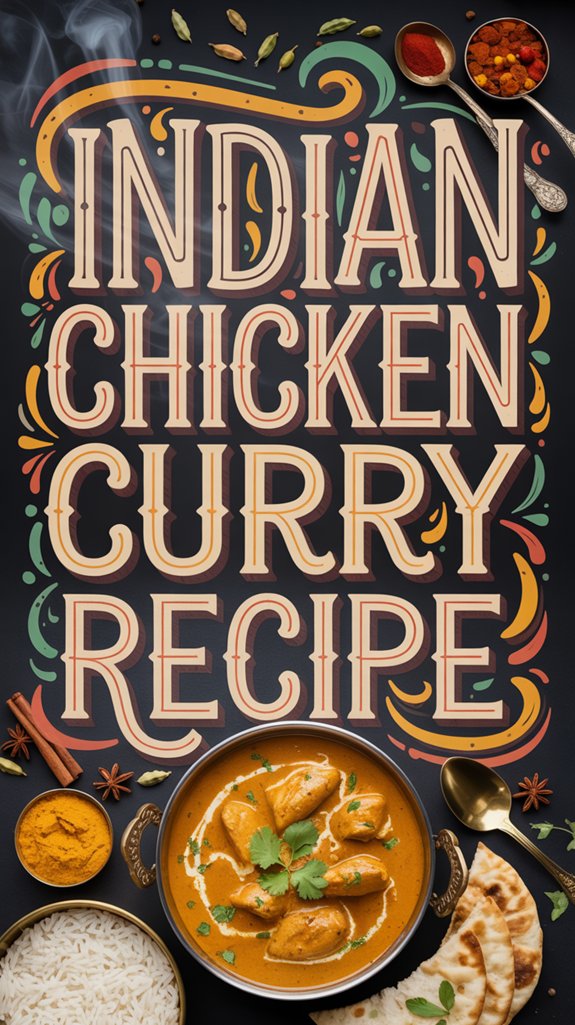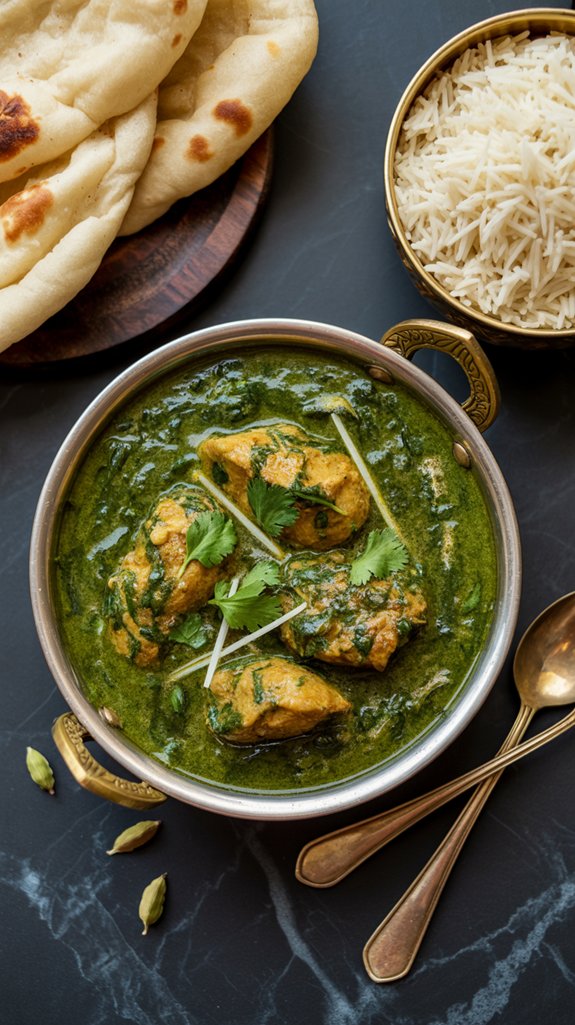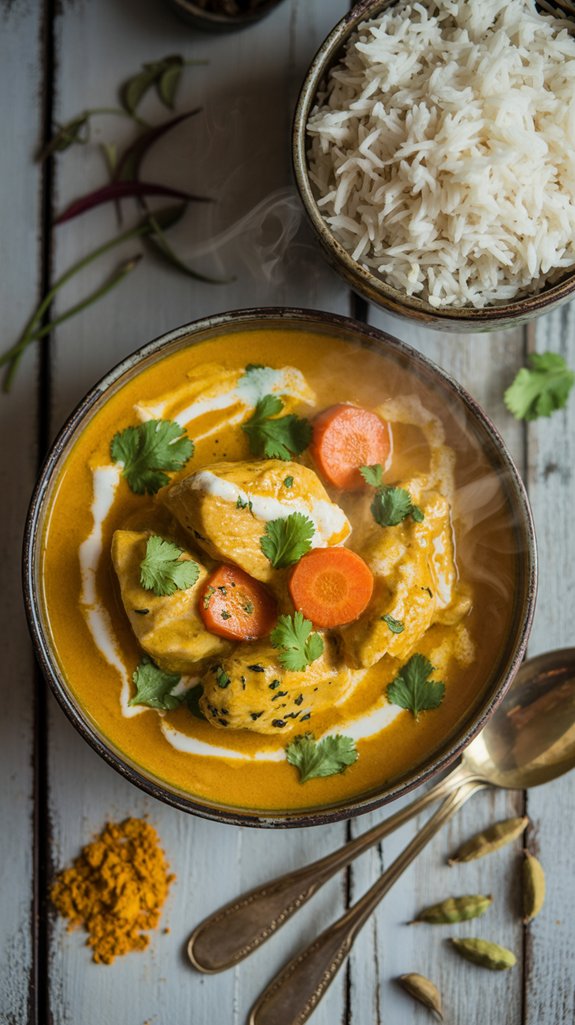Why You’ll Love This this Indian Chicken Curry
This simple chicken curry comes together in one skillet with pantry spices you probably already have, making it perfect for those weeknight dinners when you want something comforting but don’t feel like running to three different stores. The long, gentle simmer transforms basic chicken breast into tender, flavorful pieces that soak up all those warm spices – curry powder, ginger, garlic – creating a rich gravy that’s honestly better than takeout. Plus, you can serve it over rice, egg noodles, or whatever carb makes your heart happy, because let’s be real, curry without something to soak it up is just sad soup.
Ingredients List
Getting your hands on these ingredients is honestly the easiest part of making this curry, and chances are you’ve got most of them hanging out in your spice cabinet right now.
- 1 lb chicken breast, cut into 1-inch cubes
- 1/4 teaspoon ground ginger
- 1-2 teaspoons curry powder
- 1/2 teaspoon garlic powder
- 1/2 teaspoon onion powder
- 3/4 teaspoon salt
- 1 cup chicken broth
- Cornstarch for slurry
A few quick notes about keeping things on the healthier side:
- Chicken breast is naturally lean and packed with protein, so you’re getting plenty of fuel without extra fat
- All those spices bring serious flavor without adding calories, plus ginger and garlic have anti-inflammatory benefits
- Using chicken broth instead of heavy cream or coconut milk keeps the calorie count reasonable while still creating that rich, satisfying gravy
- The cornstarch thickener is a lighter choice than butter or flour-based roux, and you control exactly how thick you want it
Step by Step Directions

Making this flavorful Indian chicken curry is straightforward and takes about an hour from start to finish.
- Brown the 1 lb cubed chicken breast in a non-stick skillet over medium-high heat until all sides are golden.
- Add the spice mixture (1/4 teaspoon ground ginger, 1-2 teaspoons curry powder, 1/2 teaspoon garlic powder, 1/2 teaspoon onion powder, and 3/4 teaspoon salt) and stir to coat the chicken.
- Pour in 1 cup chicken broth and bring the mixture to a boil.
- Reduce heat to low and let it simmer for 45 minutes to 1 hour until chicken is tender and flavors meld.
- Mix cornstarch with a small amount of cold water to create a slurry.
- Add the cornstarch slurry gradually while stirring until the sauce thickens to your desired consistency.
- Serve immediately over rice or egg noodles.
For the most authentic flavor, consider using freshly ground spices with a premium spice grinder specifically designed for Indian cooking.
Substitutions and Variations
- Broth alternatives – Vegetable broth works fine if you’re cooking for someone who doesn’t eat chicken broth, or you could use beef broth for a deeper flavor.
- Thickening options – No cornstarch? A tablespoon of flour mixed with cold water does the trick, or you can simmer revealed for the last 15 minutes to let it reduce naturally.
Additional Things to Serve With This Dish
This curry is begging for some good companions to make it a proper meal.
- Rice is the obvious choice – Plain white rice, jasmine rice, or even brown rice if you’re feeling virtuous. The grains soak up that beautiful gravy like little sponges.
- Naan bread or pita – Perfect for scooping and mopping up every last drop of sauce, because leaving curry behind should be illegal.
- Roasted vegetables – Cauliflower, carrots, or green beans add color and crunch to balance out the tender chicken.
- Simple salad – A cucumber and tomato salad with a squeeze of lemon cuts through the richness nicely.
- Egg noodles – As mentioned in the recipe, they’re surprisingly good with curry and make it feel almost like comfort food fusion.
- Steamed broccoli – Kids might actually eat their vegetables when they’re swimming in curry sauce.
Cooking Tips & Tricks (Chef’s Notes)
Let me share some secrets that’ll turn your good curry into something that makes people ask for seconds.
- Don’t rush the browning – Give those chicken pieces some real color before adding spices, because pale chicken is sad chicken and we’re not running a sadness kitchen here.
- Toast your spices for 30 seconds – Just until they smell amazing, which happens faster than you think, so don’t walk away to check your phone.
- Keep that simmer gentle – Bubbling like a volcano will turn your tender chicken into rubber nuggets, and nobody wants to chew their dinner like gum.
- Taste as you go – Start with less curry powder if you’re nervous, because you can always add more but you can’t take it back once it’s in there.
- Make your cornstarch slurry smooth – Mix it with cold water first, whisking like your life depends on it, because lumpy gravy is the enemy of happiness.
- Let it rest off heat for 5 minutes – The flavors need a moment to get acquainted, like a good first date but with spices.
- Double the recipe – This stuff tastes even better tomorrow, and future you’ll thank present you for the leftovers.
Nutritional Facts
This curry packs protein while keeping calories reasonable – perfect for when you want comfort food that doesn’t derail your goals.
- Calories per serving: Approximately 180-200 calories (without rice or noodles)
- Protein powerhouse: 25-30 grams of lean protein from chicken breast keeps you satisfied
- Low carb friendly: Only 3-5 grams of carbs in the curry itself, mostly from the cornstarch thickener
- Fat content: 4-6 grams of fat, primarily from the chicken with minimal added fats
- Sodium watch: About 600-700mg per serving, mainly from the chicken broth and added salt
- Iron boost: Chicken provides about 6% of your daily iron needs
- B-vitamin rich: Excellent source of niacin and B6 for energy metabolism
- Spice benefits: Ginger aids digestion while curry powder contains antioxidant compounds
- Serving size reality check: Numbers above are based on 4 servings from the full recipe
- Rice add-on: Serving over 1 cup of rice adds roughly 200 calories and 45g carbs
Fun “Did You Know?”
Why does curry powder turn that beautiful golden color? It’s all thanks to turmeric, the star spice that gives curry its distinctive hue.
I find it fascinating that turmeric contains curcumin, a compound that’s been used for centuries as both a spice and natural dye.
Here’s another fun fact: curry powder isn’t actually traditional in Indian cooking. It’s a British invention from colonial times, created to simplify Indian spice blends for Western kitchens.
True Indian cooks blend their own garam masala fresh for each dish, creating unique flavor profiles that can’t be replicated with pre-made powders.





